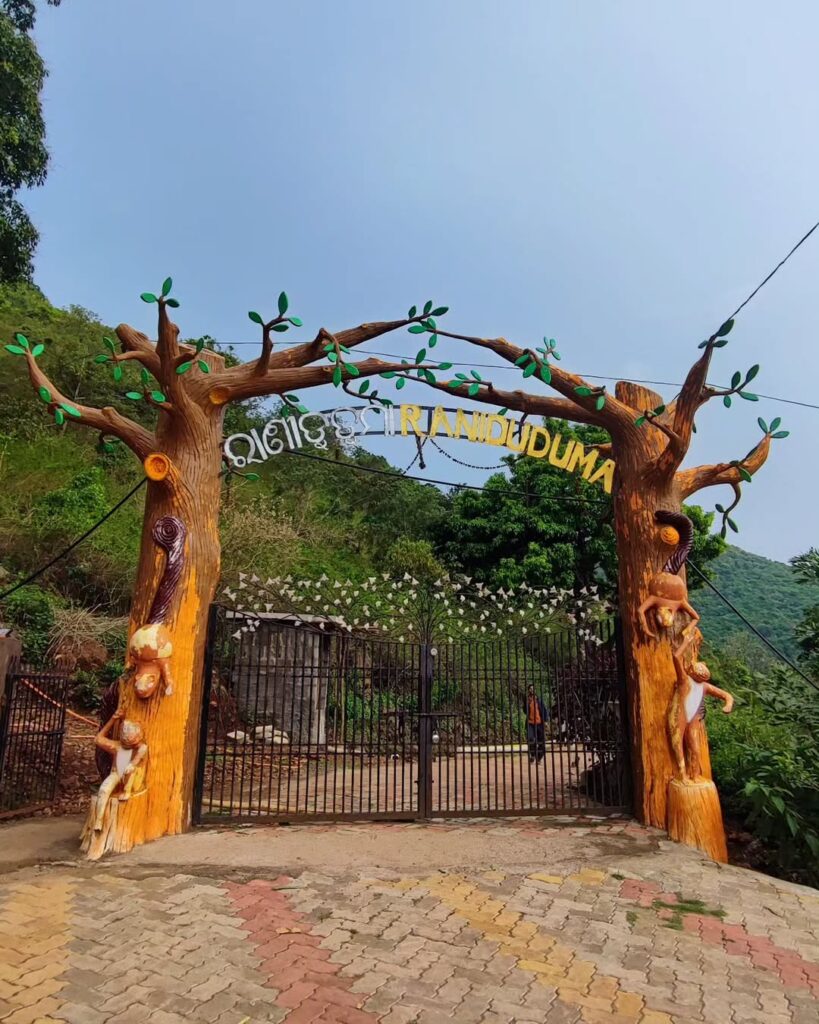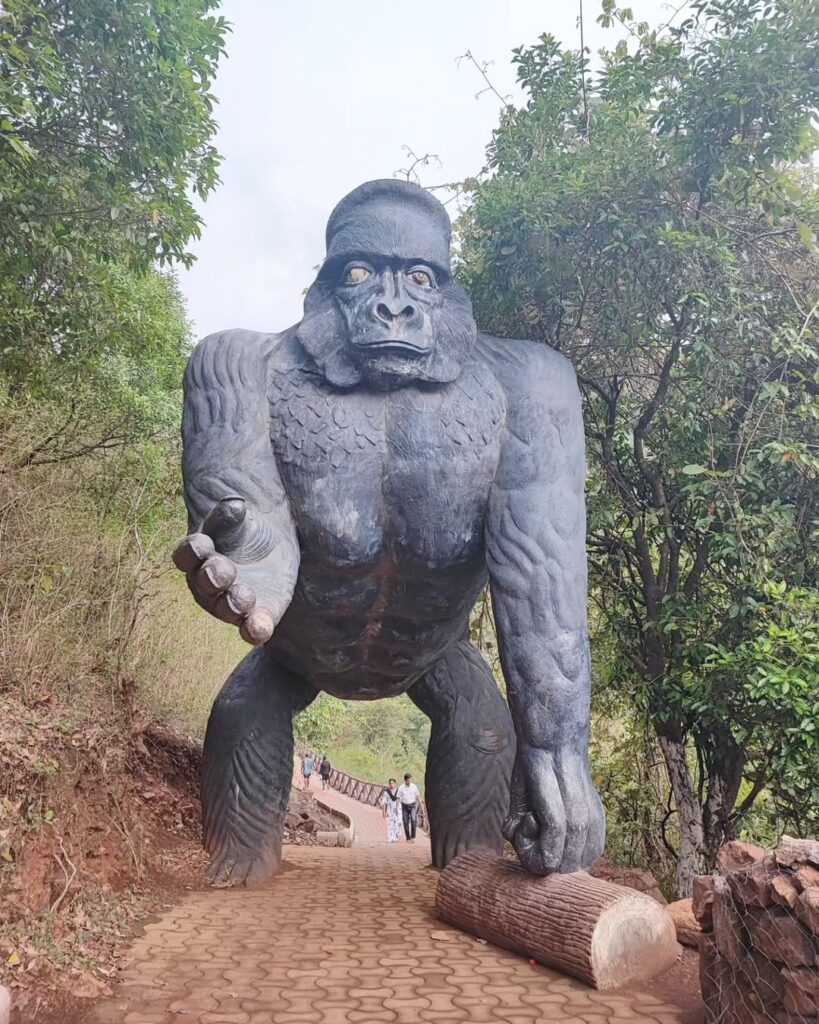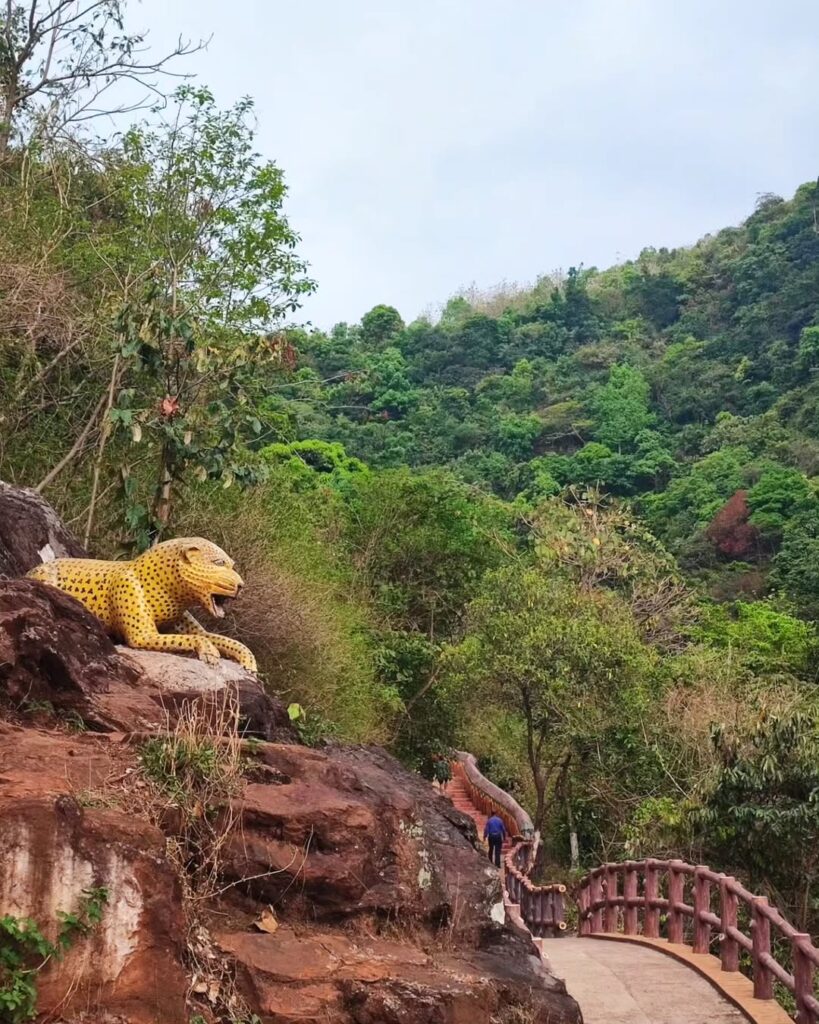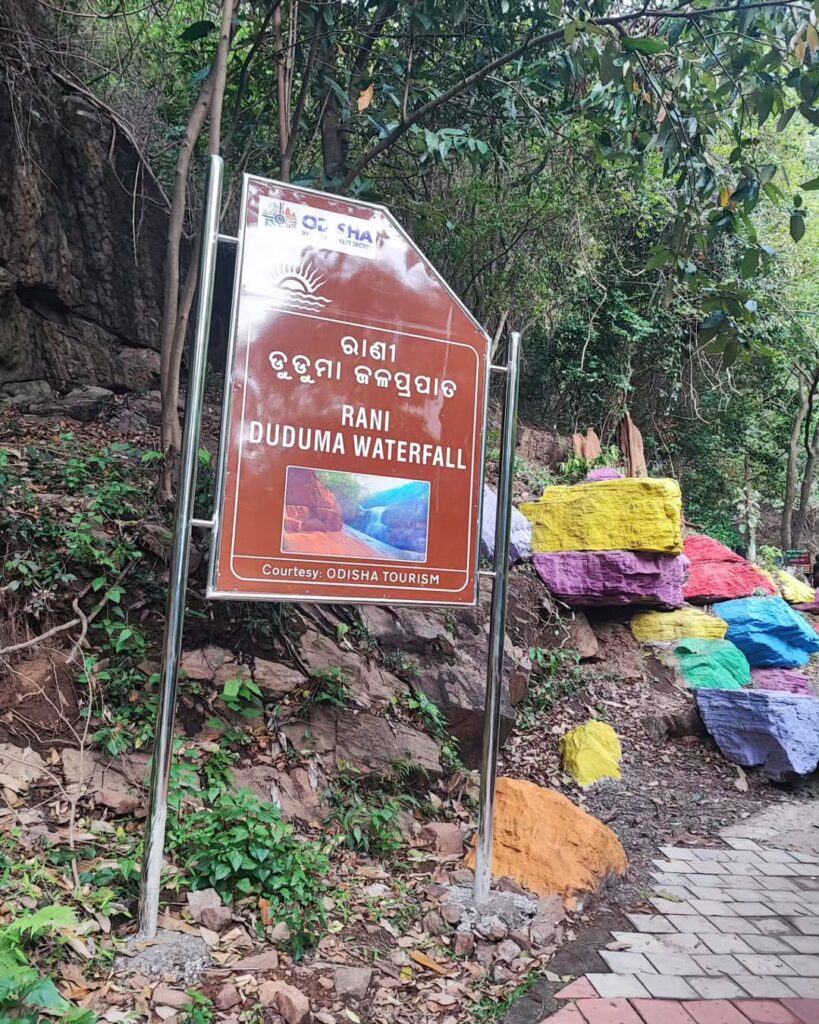Tucked away in the serene landscapes of Koraput, the Rani Duduma Waterfall is a breathtaking natural wonder that beckons travelers seeking adventure and tranquility. If you’re looking for a slice of paradise to reconnect with nature or to simply escape the hustle and bustle of everyday life, this hidden gem should be at the top of your list.
Reaching the Rani Duduma Waterfall itself can feel like part of the adventure. Located approximately [distance] from [nearest major city], the road winds through lush greenery and vibrant tribal villages, offering glimpses into the rich cultural tapestry of the region. The journey can be as exhilarating as the destination, immersing you in the heart of Odisha’s natural beauty.
As you approach the waterfall, the sound of cascading water draws you in like a soothing melody. The Rani Duduma Waterfall stands tall at about [height] meters, with water crashing down into crystal-clear pools below. This spectacular display of nature is particularly mesmerizing during the monsoon season when the water flow is at its peak, creating a powerful yet serene atmosphere.
Visitors can enjoy various activities here, from nature walks along the trails that lead to stunning viewpoints to leisurely picnics by the water’s edge. The surrounding hills provide ample opportunities for trekking and exploring, making it an ideal location for adventurers and nature lovers alike.
Aside from its natural splendor, Rani Duduma is also steeped in local folklore. Named after a legendary queen, the waterfall carries stories of valor and reverence among the indigenous tribes. Engaging with the local communities can enrich your visit, offering insights into their traditions, customs, and the significance of the waterfall in their lives.


To make the most of your trip to Rani Duduma Waterfall, consider the following tips:
Imagine standing at the edge of a roaring cascade, where water plunges over 100 meters into a misty gorge, surrounded by thick green forests that whisper secrets of ancient times. This is Rani Duduma Waterfall, a stunning spot in Koraput’s tribal lands that pulls you away from city noise into pure nature’s embrace. If you’re a hiker or just love quiet spots, this waterfall in Odisha calls your name with its wild charm.
Nestled in the Eastern Ghats, Rani Duduma forms part of Odisha’s growing eco-tourism scene. It draws folks tired of crowded beaches, offering fresh air and real adventure. As more travelers seek offbeat paths, this hidden gem shines brighter. In this guide, you’ll find its backstory, top sights, travel routes, fun activities, and smart tips to make your visit smooth. Get ready to plan a trip that leaves you refreshed.
Rani Duduma Waterfall holds deep roots in Koraput’s past, blending nature with local stories that make it more than just a pretty view. Its story ties into the area’s wild terrain and the people who call it home. Understanding this background adds layers to your visit, turning a simple hike into a cultural dive.
The waterfall springs from the Machkund River, which carves through the rocky Eastern Ghats over millions of years. Geologists link its formation to ancient tectonic shifts that shaped these hills around 500 million years ago. Early British explorers noted it in the 1800s, calling it a “grand leap” in their journals, while local tales speak of it as a gift from river spirits. No big dams or changes have touched it much, keeping its raw power intact. This natural birth makes Rani Duduma a key spot to see the Ghats’ old geology up close.


The Paraja and Bonda tribes in Koraput view Rani Duduma as a sacred site, woven into their daily lives and old customs. They hold rituals here during harvests, offering thanks to water gods for good rains. Festivals like the Paraja’s Dhemsa bring dances near the falls, where folks in bright weaves celebrate with songs. As a visitor, show respect by asking before photos and joining guided tours that share these bonds. This link boosts the site’s pull, letting you feel part of something bigger than yourself.
Odisha’s forest department lists Rani Duduma under protected zones to guard its fragile habitat. Efforts include patrols to stop illegal logging and clean-up drives that locals join each year. The area sits in a biodiversity reserve, with rules capping visitor numbers to avoid wear. These steps help save rare plants and keep the water clean. Your mindful trip supports this work, ensuring the falls stay wild for years ahead.
Rani Duduma Waterfall stuns with its raw power and quiet corners, pulling you into a world where nature rules. From the thunder of falling water to the soft hum of birds, every sense wakes up here. Key Rani Duduma Waterfall features make it stand out in Odisha’s lineup of falls, perfect for those chasing natural wonders.
This twin setup—Rani and Duduma—drops about 100 meters into a deep pool below, fed by the Machkund’s steady flow. Rocks here, etched by eons of water, show layers from the Precambrian era, like pages in earth’s old book. In monsoons, the falls swell to twice their size, creating rainbows in the spray that dance like jewels. Dry seasons reveal more of the gorge’s twists, but the real magic hits when water roars full force. These traits mark Rani Duduma as a top pick for geology fans exploring Koraput’s hidden waterfalls.
The area buzzes as a biodiversity hot spot, home to over 200 bird types, including the chatty hill myna with its mimic calls. Thick forests hide orchids that bloom in pinks and whites, clinging to Deomali’s slopes nearby. You might spot deer grazing at dawn or hear langurs swing through branches. Rare butterflies flit around damp spots, adding color to the green sea. Pack binoculars to catch these sights without harm, turning your walk into a living lesson on local life.
Head there from June to September for the monsoon rush, when rains turn the falls into a mighty beast—water pounds like drums in a storm. Paths get slick, but the power thrills every step. Post-monsoon, October to February brings calmer flows and dry trails, ideal for families or easy snaps. Skip March to May’s heat, when low water dims the show and bugs swarm. Weekday mornings beat weekends to dodge groups, letting you soak in the peace alone. Why rush? Time your trip right, and Rani Duduma rewards with its best face.
Getting to Rani Duduma Waterfall from Koraput is straightforward, though the roads wind like a snake through hills. This guide breaks down routes so you arrive without stress. Searchers often ask how to reach Rani Duduma Waterfall, and these steps make it simple.
From Koraput town, drive 30 to 40 km via Lamtaput on a paved road that climbs gently. It takes about an hour in a car, with views of rice fields turning to forests. Buses run from Koraput’s main stand near the railway station, costing around 50 rupees and dropping you at the base in 90 minutes. For ease, hire a local taxi for 1,000 rupees round trip—they know the shortcuts. Fuel up before, as stations thin out.
Fly into Visakhapatnam Airport, 150 km south, then grab a cab or bus for a three-hour ride north. Trains stop at Jeypore Station, just 50 km away, with daily services from major cities like Bhubaneswar. From there, auto-rickshaws or shared jeeps cover the last stretch in under two hours. Book ahead for peak seasons to snag seats. These links tie Rani Duduma into Odisha’s travel web, easy for most budgets.
Use apps like Google Maps for the twisty ghats, but download offline versions—signal drops in spots. Check road status at Koraput’s tourism office before rain, as slides can block paths. Signs point the way from Lamtaput, but ask locals for the final dirt track to the viewpoint. Carry water and snacks; stops are few. These hints keep your journey smooth, turning travel into part of the fun.
Rani Duduma offers more than views—it’s a playground for your inner explorer. Activities at Rani Duduma Waterfall range from calm walks to heart-pump hikes, drawing adventure seekers. Pair them with nearby spots for a packed day out.
Start with a 2-km trek from the parking lot to the main overlook, where steps lead down through bamboo groves. Sturdy shoes grip the mud, and guides share plant names along the way. At the top, the Machkund Valley spreads like a green quilt, with eagles soaring overhead. It’s moderate, taking 45 minutes up, but the payoff views make legs forget the burn. Ever wondered what wild freedom feels? This path delivers it.
Settle for lunch on flat rocks by the lower pool, where mist cools the air like a fan. Pack simple foods—no plastics—to keep things clean. For photos, aim for midday when sun hits the falls, catching arcs of color in the foam. A wide lens grabs the full drop; tripods steady shots in wind. Rules ban trash, so carry out what you bring. These spots turn a visit into memories you’ll frame.
Climb Deomali Peak, 20 km away, for 360-degree hill panoramas—a 30-minute drive then short hike. Back in Koraput, the Tribal Museum shows Bonda tools and weaves, just an hour’s return. Add the Gupteswar Cave, 40 km north, for cave swims in holy springs. Build a full day: falls in morning, peak at noon, museum by eve. Travel times link them easy, making your trip rich.
Smart prep turns a good trip great at Rani Duduma. These Rani Duduma Waterfall tips cover basics to keep you safe and happy. Focus on what matters for a hassle-free outing.
Bring rain jackets and quick-dry clothes for sudden showers—monsoons soak fast. Insect spray wards off bites, and a basic first-aid kit handles scrapes from rocks. Stick to marked paths; edges slip easy, and currents pull strong. Tell someone your plans, as cell service fades. Hydrate often in the humid air. These items shield you from surprises.
Stay in Koraput’s budget guesthouses, like forest rest houses at 500 rupees a night with simple beds. Eco-resorts near Lamtaput offer tents for 1,000 rupees, with hill views. Eat at local spots for tribal meals: try rice with bamboo shoots or mild curries, around 100 rupees a plate. Skip heavy booze; light rice beer fits the vibe. Options suit all pockets, blending comfort with local taste.
Leave no trace—pack out wrappers to protect the clear streams. Buy crafts from Paraja sellers to boost their work, not just take photos. Give tribes space; don’t chase for pics. Join clean-up if offered. These habits keep Rani Duduma thriving, a gift back to the land.
Rani Duduma Waterfall captures Koraput’s wild heart, from its tribal tales to thundering drops that refresh the soul. You’ve seen its history, beauty, paths to get there, fun to do, and tips for a solid plan. Monsoon brings the roar, eco-ways keep it pure, and adventures await in Odisha’s quiet corners.
Pack light, tread soft, and let the falls wash away worries. Share your stories below—what drew you to this gem? Your trip could spark another’s.
Whether you’re an adventure seeker, a photography enthusiast, or simply someone looking to unwind amidst nature, Rani Duduma Waterfall in Koraput is a place that will leave an indelible mark on your memory. For those planning a trip, make sure to include this picturesque destination in your itinerary.
For more information and personalized travel tips to make your visit unforgettable, please reach out to us at tourmyodisaha.com.
Happy travels, and see you at the waterfall!
Feel free to fill in the placeholders with your details or any specific information you might wish to add!
Rani Duduma Waterfall stuns with its raw power and quiet corners, pulling you into a world where nature rules. From the thunder of falling water to the soft hum of birds, every sense wakes up here.
Machkund River
The meaning of Duduma is Matsya Kunda meaning fish pond
Semiliguda to rani duduma waterfall is 26.3 km By Nandapur Rd
Rani Duduma to Deomali distance is 52.3 km via Kundili – Renga Rd
Duduma to rani duduma waterfalls distance is 61.1 km via Machkund Rd
Koraput to Duduma waterfalls distance is 67.9 km via Machkund Rd
Semiliguda to duduma waterfall distance is 79.4 km via Nandapur Rd